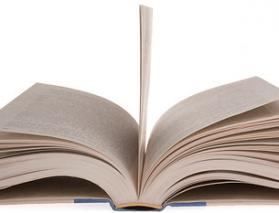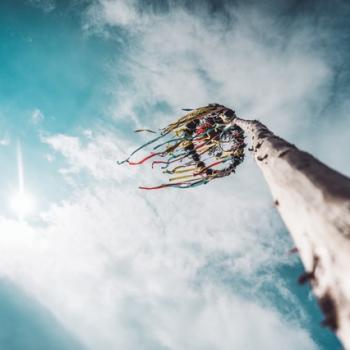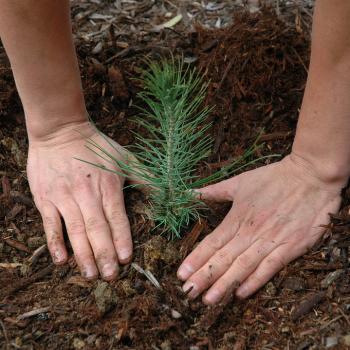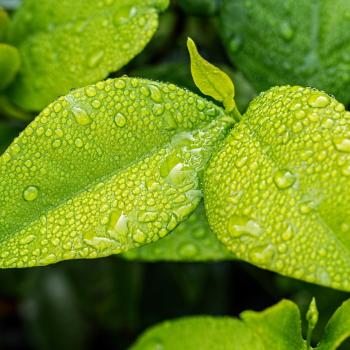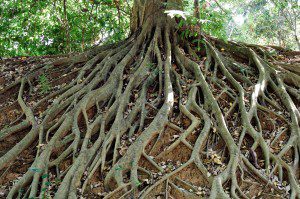
You may not know it, but we are living in an era that geologists recently have dubbed the anthropocene- an era in which the primary factor determining the destiny of the planet will be humanity. Human impact on the earth is nothing new- it dates back to 12,000 BCE and the start of the Neolithic era- but it is the pace of the change, and the unmistakable imprint it has had on the planet, that has become irreversible. For example, we already know that the U.S burns more of its share of the fossil fuels that contribute to the changing climate, and to the increased ferocity and frequency of storms. We already know and can predict what climate change is doing to the coral reefs, to the arctic, to species around the world and even to our own communities. We already know that there are whole ecosystems today that will not exist when our children’s children are born. We already know that our demand for cheaper and cheaper goods is leading to inhumane – even deadly- labor practices in countries half a world away from us. And we know what super storms are capable of doing to our own lives, too.
Unitarian Universalist belief holds us accountable to the inter-dependent web of all existence. Ours is a non-creedal faith; we hold to fellowship within a shared sense of responsibility, not a shared dogma. We inherit a precious legacy of being on the fore-front of many movements for change, and we pass those values on with a shared sense of purpose.
As the stories of many spiritual traditions tell us-from Noah and the ark onwards- stagnation is not an option. Not changing, not examining ourselves, not recognizing our part in the global story, leads to death. The Wappanoag nation has a story about the origin of death; in it, the two and four legged children of the earth have a decision to make- they can allow things to stay as they are, with no new births and no deaths, or they can allow death to open a door into another world- that way, new generations can be born, and new knowledge can come into the world. The Wappanaog chose to permit death to exist. What I notice most about this story is that the young two-legged and the young four-legged playing together that provides the spark for a solution. Animals and humans live together- all life is interconnected in the foretime. Life is an eternal dance, not a standing still. Children are the messengers of the Creator. Each generation carries the prophecy for its time. But what of ours time?
Today many aspects of our modern lifestyle worship the powers and principalities of death. Our way of living pursues short-term gain over and above the needs of long-term survival. Too much short-sighted consumerism is contributing to environmental destruction. Consumerism may be killing us. I say it is killing us not because I think that all of us should live without electricity, heal ourselves solely on wild herbs, subsist on home-made tofu, and deny ourselves the pleasure of ever, ever, shopping for holiday present ever again. If that is living in the anthropocene- who would do it? Least of all, people around the globe in the “2/3 rds” world who daily live without the lifestyle that many of us take for granted.
But belief in the inevitability of acquisition, of higher and higher standards of living that privilege the few and do not take into account the global reality, cannot be sustained. We have begun to effect changes in the forces that regulate our embodied lives- those forces that regulate wind and weather, hot and cold, rainy seasons and dry. And in doing so, we have tinkered with the very mechanism of eternity. In short, we are worshiping the powers and principalities of death because we have begun to tinker with the dance of life.
Amongt the many strands that make up Unitarian Universalist beliefs is an acceptance of wonder and a reverence for the earth. Our justice-seeking also informs these principles, and prompts us to create endeavors like the Green Sanctuary program. We have already begun to change the way we look at our role as congregations embedded in an imperiled planet.
At the end of the Anthropocene, what kind of congregations will we have? In some ways, we will have the same sorts of congregations we have always had. We will strive to be inclusive of as many different voices as possible. We will gather in joy, and we will gather in pain. Many times we will gather to feed and comfort ourselves and our neighbors. We will host addiction recovery programs, and religious education. We will name babies, we will celebrate unions, and we will bury our dead. We will stage plays, we will sing jazz vespers. We will demand justice, and we will at times fail to live up to the standards we set for ourselves. We will, I trust, do all the things that we dream of doing now – and some things I am sure that have never before been dreamt of before.
The Wampanoag Indians conveyed their truth in story-telling. So, too, do we. Sometimes those stories leave others out, or neglect to give us a picture of all voices. The Wampanoag Indian Nation was the nation in Massachusetts that first interacted with the Plymouth Colony in Massachusetts, and was nearly wiped out during King Philip’s War late in the seventeenth century. Now there are there are 2,000 members enrolled in this nation which is based in Gay Head, Martha’s Vineyard.
Every generation makes mistakes- the storytellers know this. And every generation learns something new about survival. We know that the dance of evolution is an eternal one- if we can get out of its way. That is why new generations of prophets and activists are born in every generation. May it always be so!




